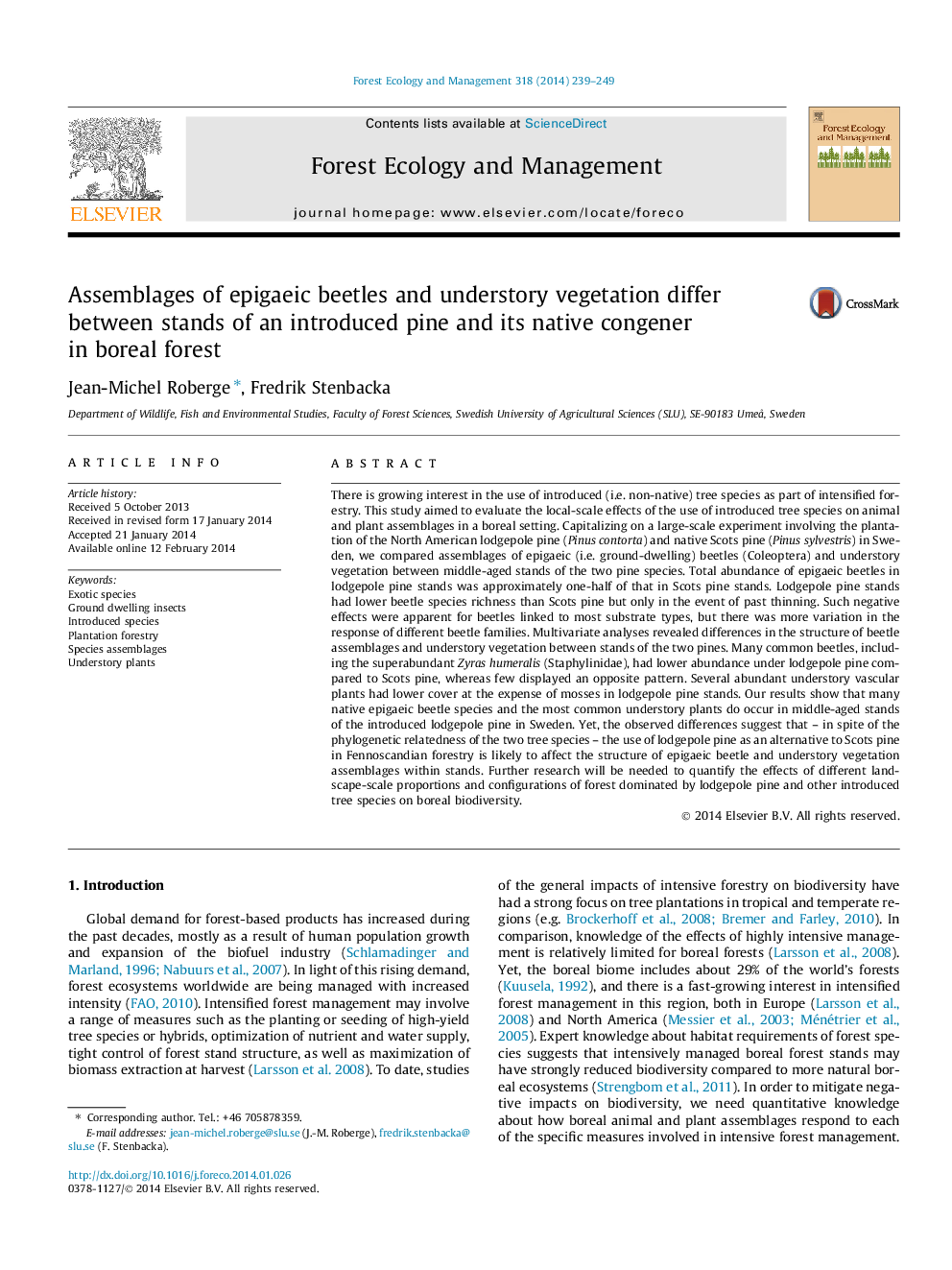| کد مقاله | کد نشریه | سال انتشار | مقاله انگلیسی | نسخه تمام متن |
|---|---|---|---|---|
| 6543604 | 159214 | 2014 | 11 صفحه PDF | دانلود رایگان |
عنوان انگلیسی مقاله ISI
Assemblages of epigaeic beetles and understory vegetation differ between stands of an introduced pine and its native congener in boreal forest
دانلود مقاله + سفارش ترجمه
دانلود مقاله ISI انگلیسی
رایگان برای ایرانیان
کلمات کلیدی
موضوعات مرتبط
علوم زیستی و بیوفناوری
علوم کشاورزی و بیولوژیک
بوم شناسی، تکامل، رفتار و سامانه شناسی
پیش نمایش صفحه اول مقاله

چکیده انگلیسی
There is growing interest in the use of introduced (i.e. non-native) tree species as part of intensified forestry. This study aimed to evaluate the local-scale effects of the use of introduced tree species on animal and plant assemblages in a boreal setting. Capitalizing on a large-scale experiment involving the plantation of the North American lodgepole pine (Pinus contorta) and native Scots pine (Pinus sylvestris) in Sweden, we compared assemblages of epigaeic (i.e. ground-dwelling) beetles (Coleoptera) and understory vegetation between middle-aged stands of the two pine species. Total abundance of epigaeic beetles in lodgepole pine stands was approximately one-half of that in Scots pine stands. Lodgepole pine stands had lower beetle species richness than Scots pine but only in the event of past thinning. Such negative effects were apparent for beetles linked to most substrate types, but there was more variation in the response of different beetle families. Multivariate analyses revealed differences in the structure of beetle assemblages and understory vegetation between stands of the two pines. Many common beetles, including the superabundant Zyras humeralis (Staphylinidae), had lower abundance under lodgepole pine compared to Scots pine, whereas few displayed an opposite pattern. Several abundant understory vascular plants had lower cover at the expense of mosses in lodgepole pine stands. Our results show that many native epigaeic beetle species and the most common understory plants do occur in middle-aged stands of the introduced lodgepole pine in Sweden. Yet, the observed differences suggest that - in spite of the phylogenetic relatedness of the two tree species - the use of lodgepole pine as an alternative to Scots pine in Fennoscandian forestry is likely to affect the structure of epigaeic beetle and understory vegetation assemblages within stands. Further research will be needed to quantify the effects of different landscape-scale proportions and configurations of forest dominated by lodgepole pine and other introduced tree species on boreal biodiversity.
ناشر
Database: Elsevier - ScienceDirect (ساینس دایرکت)
Journal: Forest Ecology and Management - Volume 318, 15 April 2014, Pages 239-249
Journal: Forest Ecology and Management - Volume 318, 15 April 2014, Pages 239-249
نویسندگان
Jean-Michel Roberge, Fredrik Stenbacka,